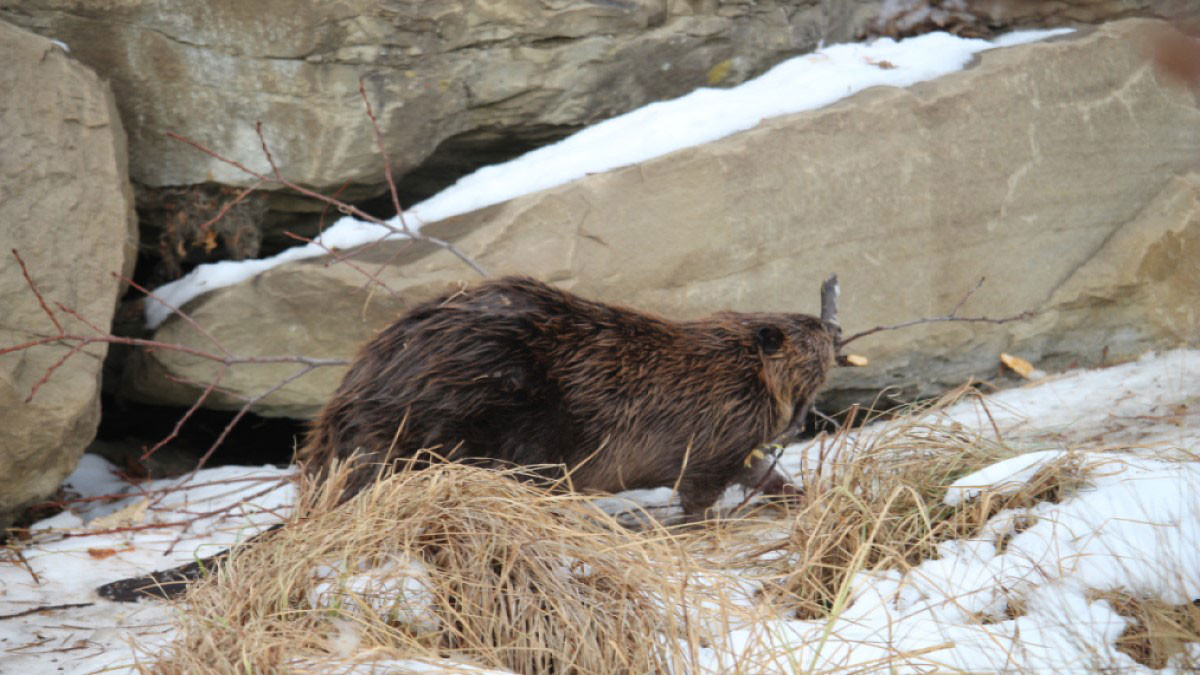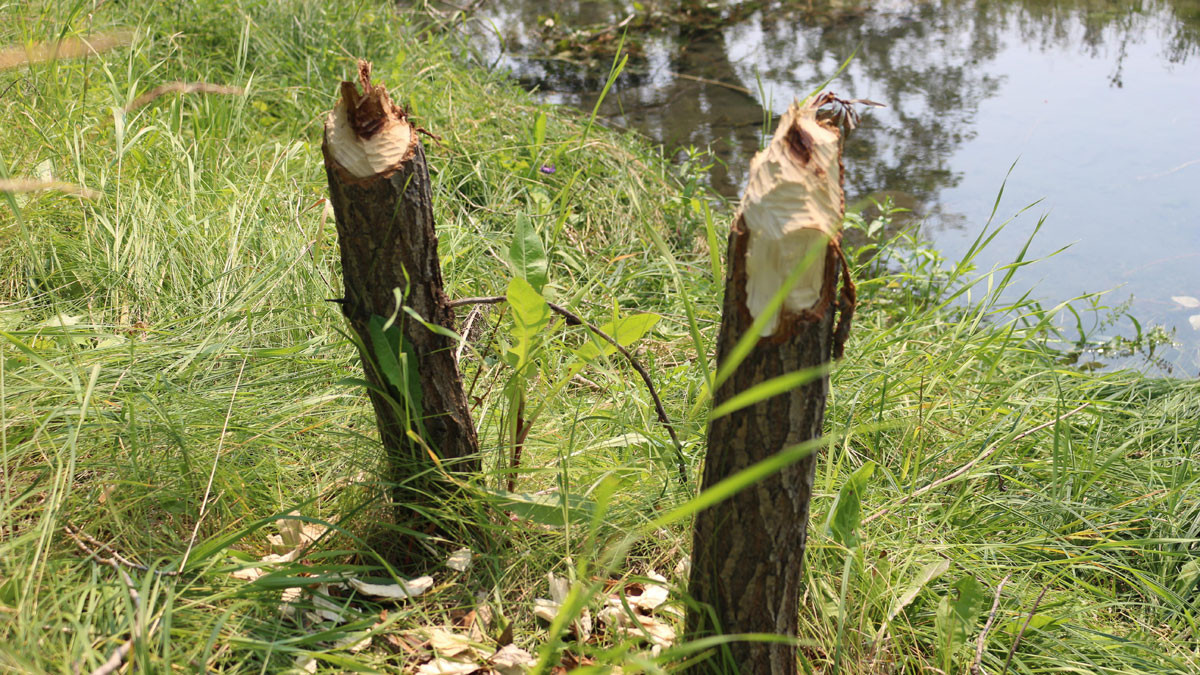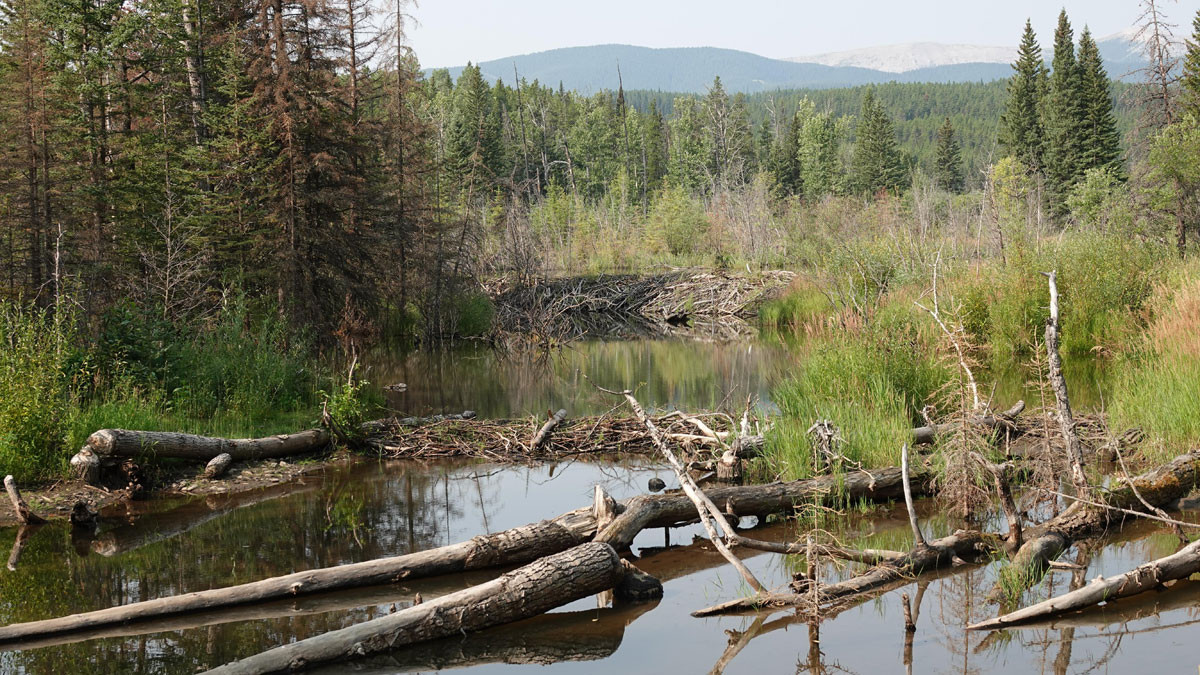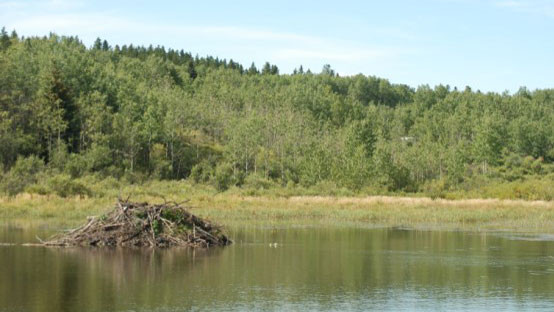Beavers are the largest rodents in Alberta and can live anywhere with enough trees and a steady water supply. They are mainly active at night, doing most of their work and eating after dark. Beavers do not have many predators and can live up to 10 years.
To build their homes, beavers cut down trees to make dams. These dams flood the area, creating a habitat for the beavers and other animals. The dams are usually built near places with flowing water. They are made from trees, branches, plants, rocks and mud, and help store water while slowly releasing pressure.
Beavers also build lodges in the ponds created by the dams. These lodges give them shelter throughout the year, with 2 underwater entrances. Beavers stockpile food at the bottom of the pond to survive the winter. Their diet mainly consists of the soft inner bark of trees. Cutting down trees and building their homes helps keep their teeth from growing too long since beaver teeth never stop growing.
Beavers have 2 types of homes: lodges and bank dens. A lodge is an island in the water, while a bank den is a hole in the side of a riverbank. Both types of homes protect beavers from predators, provide places to rest and eat, and keep them warm in the winter. They also offer a safe place for young beavers.
Did you know? Beavers are not to blame for "beaver fever" (giardiasis), caused by the parasite Giardia lamblia. It spreads through contaminated water, with common carriers being people, pets and livestock, not beavers.
Coexisting with beavers
Beavers help the ecosystem in many ways. They create wetlands that provide food, shelter and resting places for other animals. Beaver ponds slow down water flow, which helps prevent soil from washing away and lets dirt settle. These ponds also help humans by reducing flooding and drought, and by improving water quality and availability.
Coexisting with beavers benefits our landscapes and our communities. However, in developing and maintaining their habitat, beavers may remove and damage trees in the area. Their presence may also block watercourses with dams that may cause excessive flooding.
Landowners and land managers are encouraged to maintain beaver populations, while limiting the occurrence of damage or flooding by proactively and reactively implementing beneficial management practices to enhance landscapes and coexistence with beavers.
Beneficial management practices
Beneficial management practices are tools that can be applied to a landscape to support beavers and the benefits they provide.
Resources
- Coexisting with Beavers: Learn how working with beavers rather than against them helps us to coexist and enjoy the benefits beavers provide.
- Beneficial Management Practices – Interactive decision tree: Learn how to determine which beneficial management practices are best for your property.
- Alberta Beaver Beneficial Management Practices: Learn more about beneficial management practices and their application.
- Prevention and Control of Wildlife Damage Handbook: Download in-depth information about beaver control.
- Cows and Fish: Learn more about beavers and riparian areas in Alberta.
- Alberta Guide to Trapping Regulations: Official summary of Alberta government trapping regulations.
- Federal beaver dam Code of Practice: Code of practice: Beaver dam breaching and removal
- Further learning: Beaver Institute – Management, research and education
- To speak to a Beaver professional in Alberta: Find a Beaver Professional in Your Area
Contact
Connect with a Fish and Wildlife office near you:
Fish and Wildlife Officers are generally only able to respond to incidents where there is a concern for public safety.



